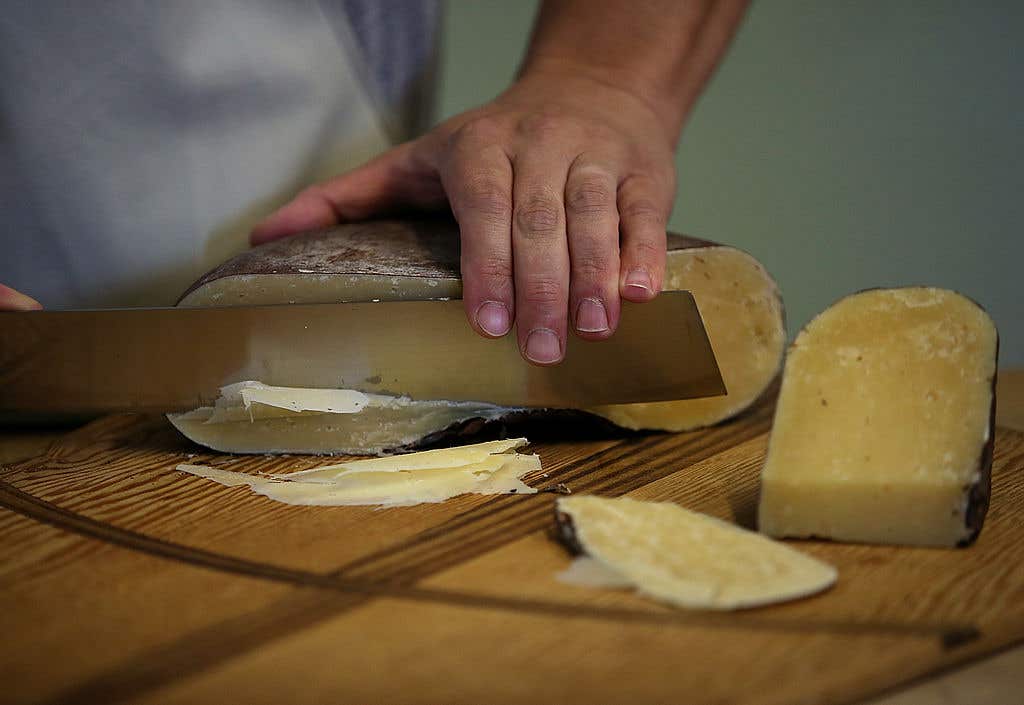
Today is a special day for dairy lovers. To celebrate, we've got a few cheesy tips for National Cheese Lovers Day, January 20th. Here you will find all kinds of great ideas to better your experience with and love affair with cheese. American's love their cheese. So does Craig Gile. He is a former "cheese grader" for Cabot Creamery. Currently the Northwest Regional Sales Manager for Cabot, his job was to eat cheese. In fact, he used to sample as many as 200 cheeses a day!
I caught up with him this week to get some tips on using, serving and even storing cheese. I also wanted to know about his job and if he needed an assistant. First of all, dairy is in his blood. He grew up on a dairy farm in Vermont and started working at Cabot while in college.
A cheese grader, not grater
Cabot specializes in cheddar cheese and has warehouses full of it. At each one, there are sample blocks. Craig rolled up with a special knife, pulled a sample core and got to work. He tested for all kinds of things like PH and salt. Then he got to taste it. Next, he determined how the cheese was aging and what it would be best used for. For instance, shredding, slicing, or extended aging.
"A lot can go wrong with cheese," he says. "Cheese is complicated."
Craig's cheesy tips
When looking to serve cheese at a party or when wanting to pair it with other foods, desserts, wine and spirits, he has some advice. "Don't overthink it. It's about the experience. Stop and experience the cheese." In other words, slow down. Take a minute to really enjoy the texture and all the flavors that are present. Let it melt in your mouth, literally.
"Cheese pairings are not an exact science. The best thing to do is try to match the intensity levels of the cheese with whatever wine or spirit you are serving," he says. You don't necessarily have to match flavors, however, that is another way.
Best temperature for cheese
Cheese should be served room temperature. If it's too cold, you miss its glorious subtleties. How long before serving it should be out of the refrigerator depends on it's density. A thick block of aged cheddar takes longer to get to room temp than a soft goat or triple cream cheese.
Best way to store cheese
Cheese needs to breathe and it needs humidity. Put it in the drawer with your fruits and veggies so it doesn't dry out. Plastic is not optimal for storage as it could advance the formation of mold. Craig suggests wrapping left overs in butcher block paper.
Tricks to help cheese melt
Aged cheeses just don't melt well. If you want some of their flavors, simply add a teaspoon or less of sodium citrate. Craig says it keeps the fat and protein from separating and allows you to better use older cheeses.
Wine Pairing tips
Go back to the basics and try to match flavor profiles. If your cheese is acidic, look for a wine that is similar. If you are serving a big bold cheddar, stick to full or medium body wines such as cabernet, syrah, or zin. Maybe pick a region of the world and serve cheese from the area with the wines produced there. Experiment and have fun.
Grilled cheese tips
Mix two cheeses together. One that is intense like a cheddar and one that is more mild like muenster. The same or similar mix can be used for all kinds of food toppings.





